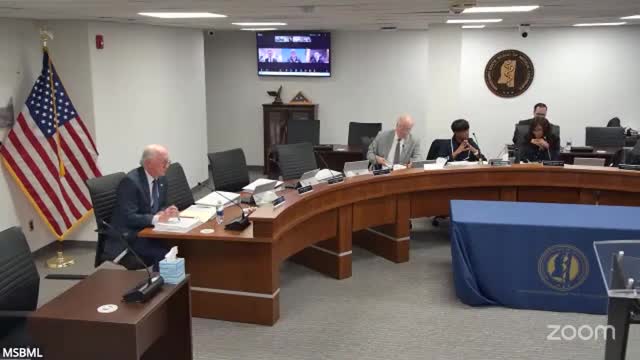Cadence leaders discuss remote patient monitoring barriers in Mississippi health care
March 21, 2025 | State Board of Medical Licensure, Agencies, Organizations, Executive, Mississippi
This article was created by AI summarizing key points discussed. AI makes mistakes, so for full details and context, please refer to the video of the full meeting. Please report any errors so we can fix them. Report an error »

In a recent Executive Committee Meeting in Mississippi, healthcare leaders gathered to discuss the pressing challenges of providing medical care in rural areas. The atmosphere was charged with a sense of urgency as they explored innovative solutions to bridge the healthcare gap for underserved populations.
Dr. Feldman, a key speaker at the meeting, highlighted the barriers faced by healthcare providers in Mississippi, particularly in rural health clinics (RHCs) and federally qualified health clinics (FQHCs). He emphasized that approximately 75 to 80 percent of enrollees in these clinics qualify for services, underscoring the critical need for improved access to both primary and specialty care. The discussion turned to remote patient monitoring (RPM) as a potential game-changer in enhancing healthcare delivery in these regions.
The meeting revealed that many counties in the U.S., including Mississippi, lack access to board-certified specialists, with 50 percent of counties having none. This stark reality makes the role of RPM even more vital. Dr. Feldman shared that their organization has seen significant improvements in patient access and satisfaction, with net promoter scores (NPS) reaching levels higher than those of leading commercial providers.
A notable aspect of their RPM program is its adaptability to rural settings. Unlike traditional systems that rely on Wi-Fi or internet access, their technology utilizes cellular networks, allowing patients to receive care without the need for complex setups. This approach has proven effective in ensuring that rural patients receive care equivalent to that of their urban counterparts, a significant achievement given the ongoing broadband access issues in many areas.
As the meeting progressed, the conversation shifted to the broader implications of these advancements. The leaders expressed optimism that continued support from the Centers for Medicare & Medicaid Services (CMS) would further enhance access to care in rural America. They underscored the importance of leveraging technology to level the playing field for both providers and patients, ensuring that quality healthcare is not a privilege reserved for urban populations.
The discussions at this meeting reflect a growing recognition of the unique challenges faced by rural healthcare providers in Mississippi. As they navigate these obstacles, the commitment to improving access through innovative solutions like RPM shines a hopeful light on the future of healthcare in the state. The leaders left the meeting with a renewed sense of purpose, eager to extend their efforts and make a lasting impact on the health of their communities.
Dr. Feldman, a key speaker at the meeting, highlighted the barriers faced by healthcare providers in Mississippi, particularly in rural health clinics (RHCs) and federally qualified health clinics (FQHCs). He emphasized that approximately 75 to 80 percent of enrollees in these clinics qualify for services, underscoring the critical need for improved access to both primary and specialty care. The discussion turned to remote patient monitoring (RPM) as a potential game-changer in enhancing healthcare delivery in these regions.
The meeting revealed that many counties in the U.S., including Mississippi, lack access to board-certified specialists, with 50 percent of counties having none. This stark reality makes the role of RPM even more vital. Dr. Feldman shared that their organization has seen significant improvements in patient access and satisfaction, with net promoter scores (NPS) reaching levels higher than those of leading commercial providers.
A notable aspect of their RPM program is its adaptability to rural settings. Unlike traditional systems that rely on Wi-Fi or internet access, their technology utilizes cellular networks, allowing patients to receive care without the need for complex setups. This approach has proven effective in ensuring that rural patients receive care equivalent to that of their urban counterparts, a significant achievement given the ongoing broadband access issues in many areas.
As the meeting progressed, the conversation shifted to the broader implications of these advancements. The leaders expressed optimism that continued support from the Centers for Medicare & Medicaid Services (CMS) would further enhance access to care in rural America. They underscored the importance of leveraging technology to level the playing field for both providers and patients, ensuring that quality healthcare is not a privilege reserved for urban populations.
The discussions at this meeting reflect a growing recognition of the unique challenges faced by rural healthcare providers in Mississippi. As they navigate these obstacles, the commitment to improving access through innovative solutions like RPM shines a hopeful light on the future of healthcare in the state. The leaders left the meeting with a renewed sense of purpose, eager to extend their efforts and make a lasting impact on the health of their communities.
View full meeting
This article is based on a recent meeting—watch the full video and explore the complete transcript for deeper insights into the discussion.
View full meeting
